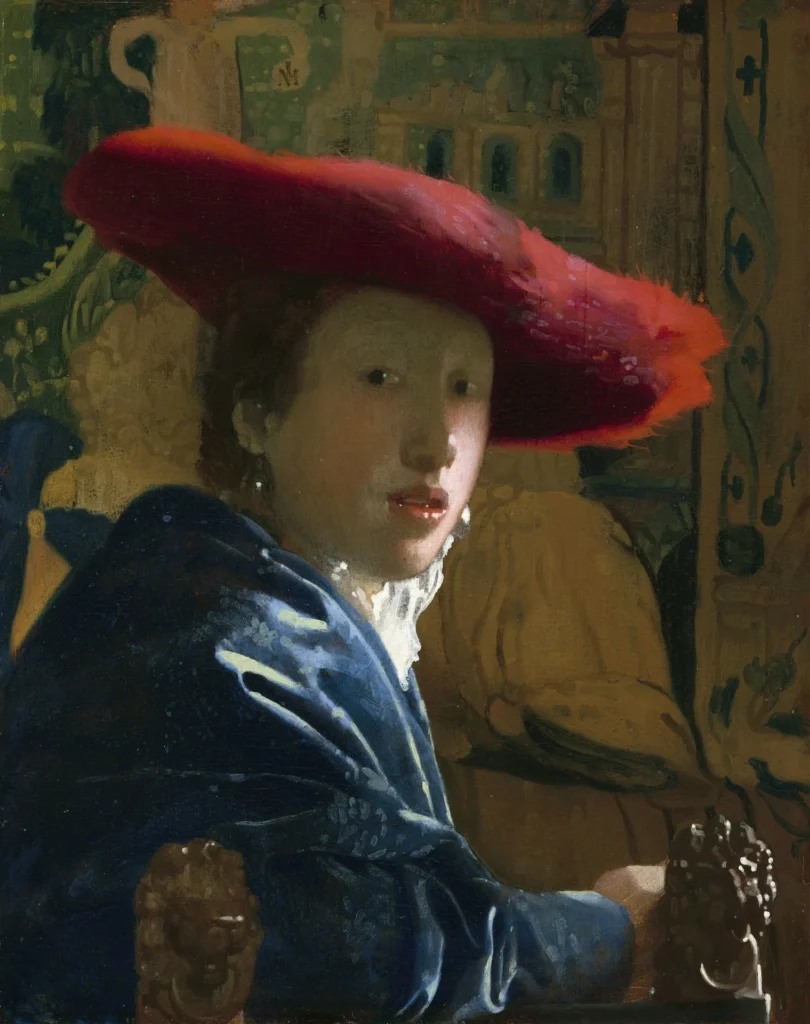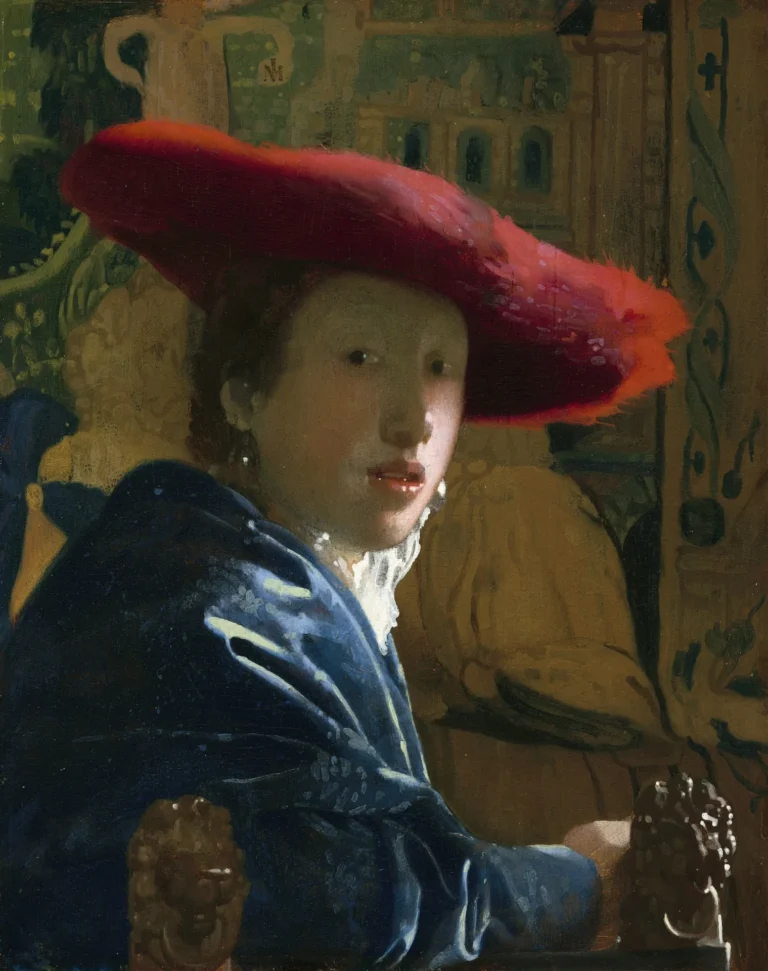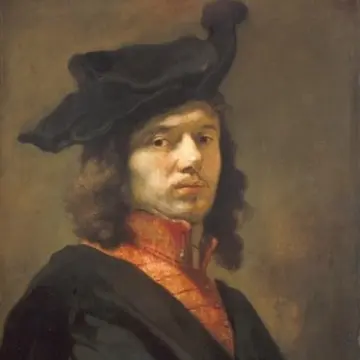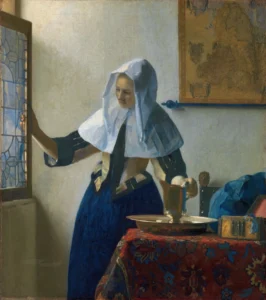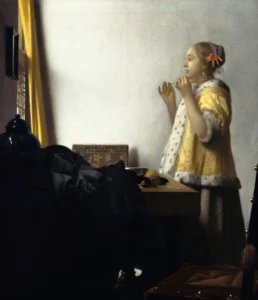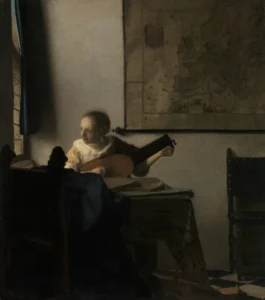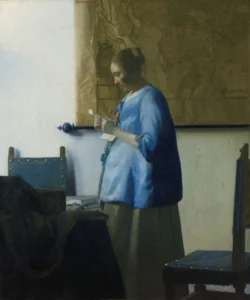Girl with the Red Hat (1665-1667)
Created around 1665-1667, 'Girl with a Red Hat' is a captivating portrait by Vermeer that features a young woman adorned in a deep blue robe, a striking red hat, and elegant pearl earrings. Measuring only 23.2 cm × 18.1 cm, this piece is a testament to Vermeer’s innovative use of light and color, with bold brushwork that delineates soft contrasts and textured fabric. Uniquely painted on wood, it exemplifies Vermeer’s experimental approach and opens a window into the intimate world of 17th-century Dutch life.
1665 - 1667
About the Artwork
The journey of 'Girl with a Red Hat' begins in the bustling art scene of the Dutch Golden Age. Vermeer, a master of light, used this artwork to push the boundaries of his style. Initially owned by his patron, Pieter Claesz van Ruijven, the painting later passed through several collectors before being acquired by Andrew W. Mellon in 1925. In 1937, it found its permanent home at the National Gallery of Art in Washington, D.C., where it continues to captivate audiences and scholars alike due to its aesthetic brilliance and historical significance.
Did You Know
Liked what you see? Add it to your collection.
Enjoyed reading? Share it.
... continued
Artist and Period
The painting is attributed to Johannes Vermeer, a prominent artist of the Dutch Golden Age. It is one of his smaller works, measuring 23.2 cm × 18.1 cm (9.1 in × 7.1 in).
Medium and Support
Unlike most of Vermeer's works, which are painted on canvas, 'Girl with a Red Hat' is painted on a wooden panel. This is one of only two Vermeer paintings known to be on panel, the other being 'Girl with a Flute'.
Subject and Composition
The painting depicts a young woman dressed in a deep blue robe, wearing a distinctive red hat and pearl earrings. Her hair is up, and she has a slightly parted mouth and an engaging gaze directed at the viewer. The composition includes a chair with carved wooden lions' heads on the backrest and a tapestry in the background.
Style and Technique
The painting showcases Vermeer's innovative use of light and color. The red hat, for example, is painted in two layers: a lower layer of vermilion mixed with black pigment and an upper layer of madder lake glaze. The face is illuminated from the right, which is unusual in Vermeer's works. The brushwork is bold and abstract, with clear contrasts of light and dark, and the use of green and pink tones to create a vibrant effect.
Authorship and Provenance
The attribution of the painting to Vermeer has been a subject of debate, but recent studies and expert opinions have confirmed his authorship. The painting was executed on a reused panel, originally depicting a man wearing a wide-brimmed hat, as revealed by infrared reflectography and X-ray radiography.
Historical Context
The painting is believed to have been owned by Vermeer's patron, Pieter Claesz van Ruijven, and later passed through several owners before being purchased by Andrew W. Mellon in 1925. It was eventually gifted to the National Gallery of Art in Washington, D.C. in 1937.
Significance
'Girl with a Red Hat' is considered a pivotal work in Vermeer's career, marking an experimental phase where he explored bolder brushwork and higher contrasts of light and color. This style would influence his later works, such as 'The Geographer' and 'The Astronomer.'




